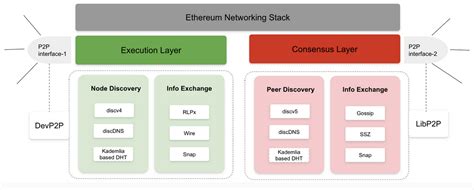Ethereum: The Role of Nodes in Verifying Bitcoin Transactions
In the world of cryptocurrency, trust and decentralization are key to a functioning network. At the heart of this ecosystem is the bitcoin network, where nodes play a crucial role in verifying transactions that take place within it. In this article, we’ll delve into the process of how nodes verify bitcoin transactions, exploring the different types of nodes involved and their unique responsibilities.
The Bitcoin Network: A Brief Overview
Before diving into the details, let’s quickly review the basics of the bitcoin network. The bitcoin network is a decentralized system, meaning that it operates independently of central authorities or intermediaries like banks. Transactions are recorded on a public ledger called the blockchain, which contains a record of all Bitcoin transactions that have ever taken place.
Transaction Verification: A Key Function
Transaction verification is the process by which nodes confirm that a transaction has been accepted and is valid. This ensures that transactions are not double-spended or maliciously altered. The process involves multiple steps:
- Node Selection: A node selects a random subset of unconfirmed transactions from its database.
- Transaction Verification: Each selected transaction is verified by a set of rules, which include:
* Checking for valid addresses and amounts
* Ensuring the sender has sufficient funds to spend
* Verifying that the recipient’s wallet address matches the one associated with the transaction
- Block Creation

: If the transactions are found to be valid, a new block is created and added to the blockchain.
- Blockchain Update: The updated blockchain is broadcast to the network for verification.
Types of Nodes: What You Need to Know
There are several types of nodes involved in verifying bitcoin transactions:
- Full Node: A full node is responsible for storing the entire blockchain, including unconfirmed transactions. This requires significant computational resources and storage capacity.
- Lightweight Node: A lightweight node only stores a subset of the blockchain, focusing on recent transactions and updates. These nodes are faster but less comprehensive than full nodes.
- Mining Node: Mining nodes verify transactions for new blocks and participate in the mining process to secure the network.
- Intermediary Node (I2P): I2P nodes act as intermediaries between users, providing a layer of anonymity and security for transactions.
Node Roles and Responsibilities
Each node plays a crucial role in verifying bitcoin transactions:
- Block Verification: Full and lightweight nodes verify blocks for correctness and consistency.
- Transaction Verification: Nodes select and verify unconfirmed transactions, ensuring they meet the transaction verification rules.
- Network Participation: Mining nodes participate in the mining process to secure the network and validate new blocks.
- Anonymity: I2P nodes provide a layer of anonymity for users who use their own private keys to conduct transactions.
Conclusion
In conclusion, nodes play a vital role in verifying bitcoin transactions within the blockchain ecosystem. From full and lightweight nodes to mining nodes and intermediary nodes (I2Ps), each plays a unique responsibility in ensuring the integrity and security of the network. Understanding how nodes work together is essential for grasping the complexities of cryptocurrency networks.
Additional Resources
If you’re interested in learning more about Bitcoin or cryptocurrency networks, here are some additional resources:
- Bitcoin.org: The official website of the bitcoin protocol
- Blockchain.
